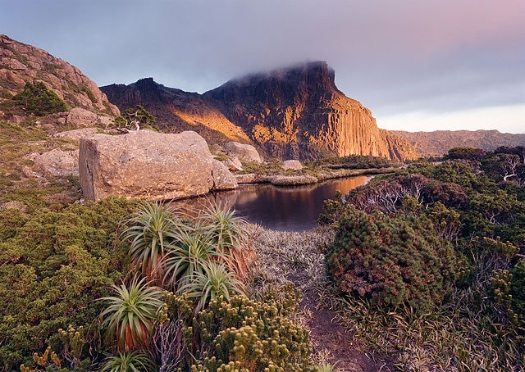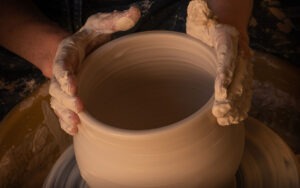
April 26, 2017; New York Times
In the Isle of the Dead, a famous cemetery on the Australian island state of Tasmania, the sea is encroaching on gravestones and telephone poles, wearing away the earth under mature trees that now stand precariously, roots revealed. A coal mine where convicts once pulled ore from the depths is being attacked by the sea—ironic, really, as the burning of coal has contributed to putting more carbon dioxide into the atmosphere, raising the sea level.
The Port Arthur Historic Sites, which include the cemetery and coal mine, are home to a prison where the British Empire of the 19th century sent the worst of their convicted criminals. The sites are part of the island’s tourism economy. The guided tour includes the threatened gravestones, one of which, an 1843 marker for schoolmaster Benjamin Horne, reads, “Sincerely regretted by all who knew him.”
Coastal consultant Chris Sharples has been taking note of the erosion problems around southern Tasmania. Pointing to the shoreline that the sea has deeply cut, he stated, “It’s a smoking gun for sea-level rise causing an acceleration of erosion,” he said. “And it’s coal! Mined for burning!”
Across the globe, the managers of heritage sites and national parks are recognizing the threats of flooding and erosion, rising temperatures, and intense storms—all caused by climate change. It will cost $6 billion to install sea gates to preserve the art and architecture of Venice. Large sections of Australia’s Great Barrier Reef have died, too late to be saved. The Neolithic ruins of the Orkney Islands off the coast of Scotland are in danger, as are the Easter Island Heads in the Pacific Ocean. Most of the glaciers in Montana’s Glacier National Park have melted since the 19th century, and the park will likely have no glaciers at all by 2100. Alaska archeological sites are threatened, while highways and villages are collapsing as the permafrost melts. Even the Statue of Liberty herself is vulnerable; the infrastructure of the pedestal was seriously damaged from the flooding of Hurricane Sandy in 2012 and was closed for months for repairs.
None of this should come as a surprise. The UN’s World Heritage Convention, which administers the lists of heritage sites, presaged the problems coming due to climate change, especially to natural sites like the Great Barrier Reef.
When the group wanted to update its report in 2016, the conservative government of Australia, under fierce attack at home for the perceived weakness of its climate policies, demanded that any mention of the Great Barrier Reef be stripped out of the new version. The United Nations complied, though the suppressed material quickly leaked.
Sign up for our free newsletters
Subscribe to NPQ's newsletters to have our top stories delivered directly to your inbox.
By signing up, you agree to our privacy policy and terms of use, and to receive messages from NPQ and our partners.
In the very year that controversy played out, the reef suffered profound damage from high water temperatures, fulfilling the prophecy of a decade earlier.
The ocean expands as it absorbs the gases emitted by human actions. It has risen about eight inches since 1880. This reaction is compounded anywhere the ground sinks below sea level, as in Venice and along much of the East Coast of the United States. The situation appears to be accelerating, and because greenhouse emissions have not been stopped, people on the coasts around the globe may have to abandon their communities. Work to save historic sites has barely gotten past the study stage.
“We’re a long way from managing this issue well,” said Adam Markham, who is deputy director for climate and energy with the Union of Concerned Scientists, an American group, and who was the lead author of the most recent report on world heritage sites.
Heritage sites and parks are generally underfunded, but that is not the only issue they face. As historic places are threatened by erosion and rising water, should they alter structures or change the natural look of a park to preserve it? This is a particular conundrum when the architecture is the main reason the place is historic.
David Roe, the archaeology manager of the Port Arthur Historic Site Management Authority, grapples with this puzzle. They have spent $5 million to reinforce the old prison against wind and rising seawater. The character of the site would change if more aggressive protections, such as a seawall, were to be installed. Dr. Roe believes it would culturally devalue the place the prison has in the history of Port Arthur and its place in the British Empire.
“We can’t retreat” from the rising sea, Dr. Roe said. “We can’t elevate. We can’t rebuild. Perhaps all we can do is manage loss.”
At the end of this century, it will not be just Port Arthur under water. Lady Liberty could be wading in New York Harbor, and seaside properties in Southampton, New York, and Palm Beach, Florida, might well be submerged. Perhaps then the residents of those expensive neighborhoods will also feel “sincere regret.”—Marian Conway












